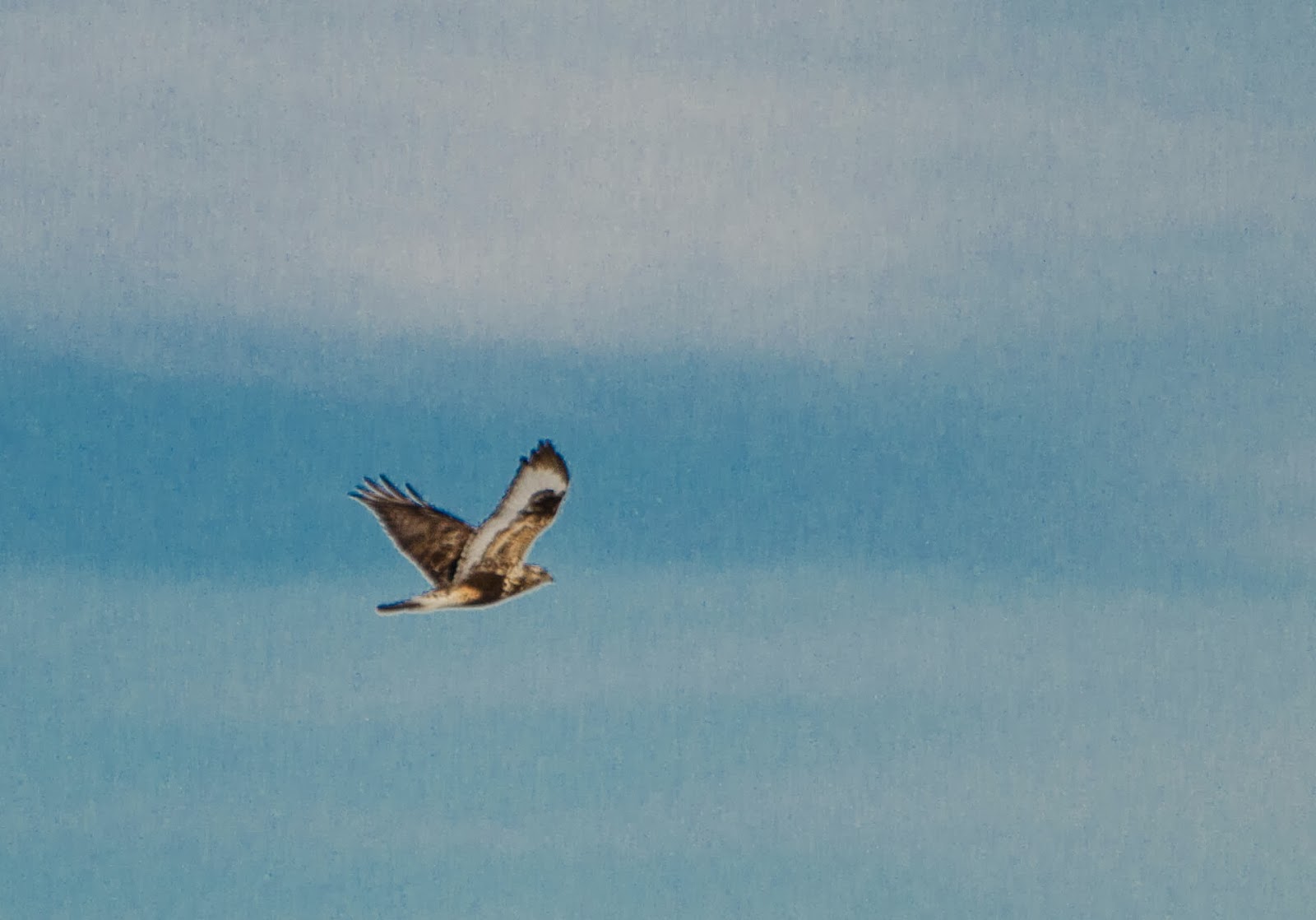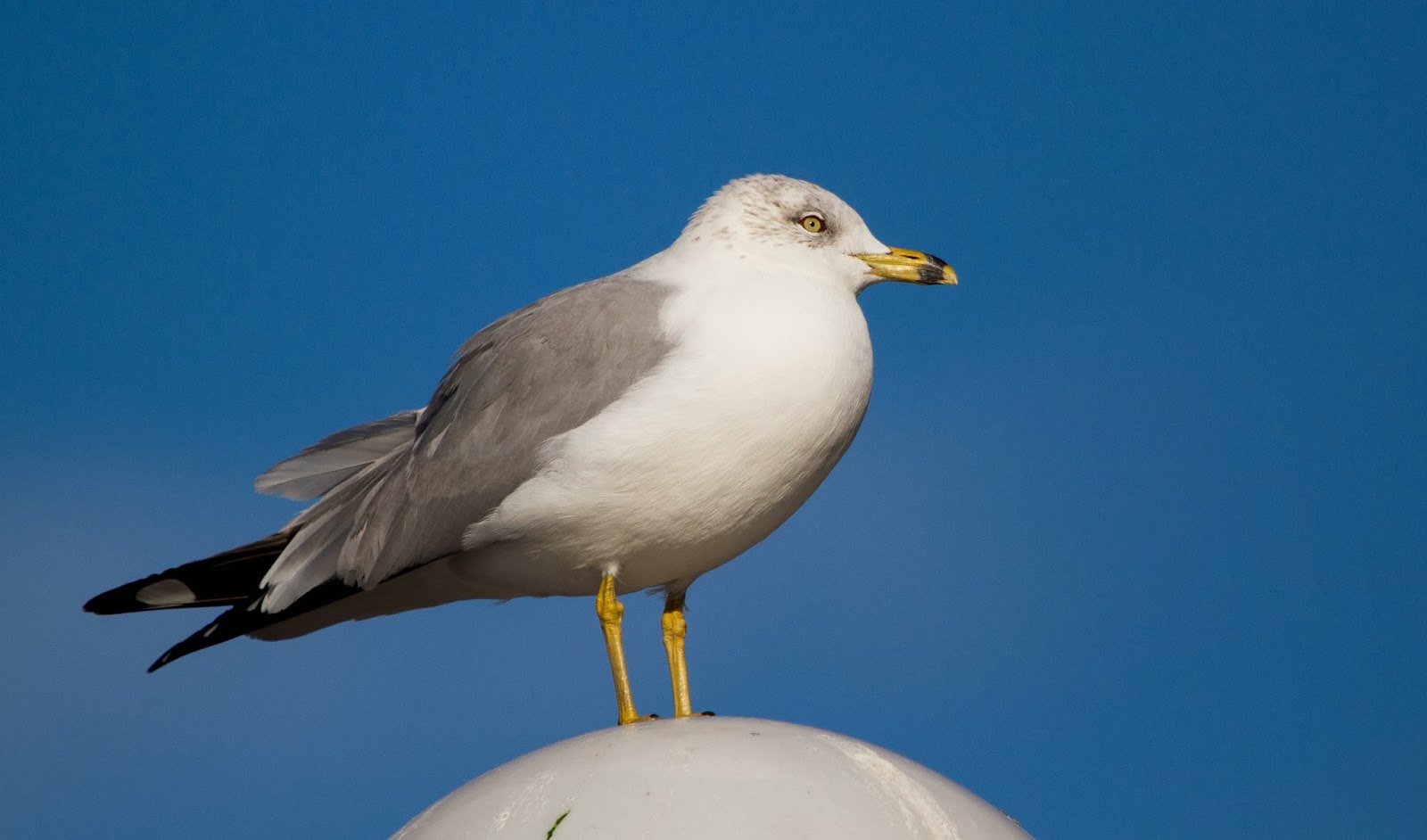 |
| Front Range of Colorado, from Aurora Reservoir |
So why, then, do most birders cringe when they hear of gulls? Or to say, quoting an expert birding friend, "I don't do gulls"?
Never mind all that. Gulls are pulling me in. I've spent some time this winter staring at thousands of gulls at Aurora Reservoir, searching - unsuccessfully - for a couple of rock stars of the gull world in Colorado: a Slaty-backed Gull and an Iceland Gull. Did I mention "unsuccessful"? On the positive side, I've seen a few Lesser- and Greater Black-backed Gulls, along with the more plentiful - in Colorado, anyway, Herring and Thayer's and California. It goes without saying that I've seen lots of Ring-billed Gulls, the default gull in our state.
 |
| Aurora Reservoir January 2014 |
 |
| Ring-billed Gull Denver, CO |
So I enjoy the reading assignments on the gull unit. And yes, dear AMB mentors, some of us do read the optional readings, especially the great stuff in one of my favorite resources, "Identify Yourself". Bill Thompson III, the author of this delightful tome, takes gull ID to its simplest. He says that there are just two things you need to know about gulls. First, there are only three basic kinds of gulls: large, medium, and small. Second, gulls all start out brown and end up gray or black and white.
Wow. That makes it pretty simple. Okay, maybe it's not that simple, but it makes for a nice framework for studying these birds.
 |
| Herring Gull Denver City Park 2012 |
 |
| Herring Gull (Juvenile, or I should say 1st or 2nd Cycle, but I'm still figuring that out. Suffice to say: not adult) Florida 2011 |
 |
| California Gull Point Reyes National Seashore (CA) 2013 |
 |
| Franklin's Gull Denver City Park 2013 |
 |
| Franklin's Gulls Nebraska 2012 |
Uncommon but expected in Colorado are Bonaparte's, Lesser Black-backed, Thayer's, and Glaucous.
 |
| Bonaparte's Gulls - with bubblegum pink legs and heads tucked Chatfield State Park 2012 |
 |
| Black-legged Kittiwake Kenai Fjords, AK 2011 |
Then follow the very rare in Colorado (Laughing, Iceland, Glaucous-winged, and Western), and the vagrants (Ross's, Ivory, Black-headed, and Slaty-backed). Now, I may not have seen all of these birds in Colorado, but, again, my travels have served well for at least a few species:
 |
| Laughing Gull New Orleans, LA 2012 |
 |
| Laughing Gull 1st or 2nd cycle New Orleans, LA 2012 |
 |
| Laughing Gull ( adult) Florida 2011 |
 |
| Glaucous-winged Gull Kenai Fjords, AK 2012 |
 |
| Western Gull Point Reyes National Seashore 2013 |
 |
| Western Gull (1st or 2nd cycle) Point Reyes National Seashore 2013 |
Nick gives us details of the various gulls, and the field marks, and all manner and kind of other information on the different species. As happens quite frequently in these classes, my brain fills up quickly, and I'm left just completely overwhelmed. I figure that I'll have to rely on notes and books, and study at a later date.
Of course, when the later date arrives, I've forgotten far too much of what I've learned, and so, as I do so frequently in similar cases, I turn to my photos for a review. I'm kind of amazed and overwhelmed that in such a short time birding, I've captured images of so many different gulls......and the odd and wondrous thing is that - at the time - I had no idea how remarkable some of these birds were.
 |
| Gray-headed Gull South Africa 2013 |
 |
| Lava Gull Galapagos 2013 |
 |
| Swallow-tailed Gull Galapagos 2013 |



















































